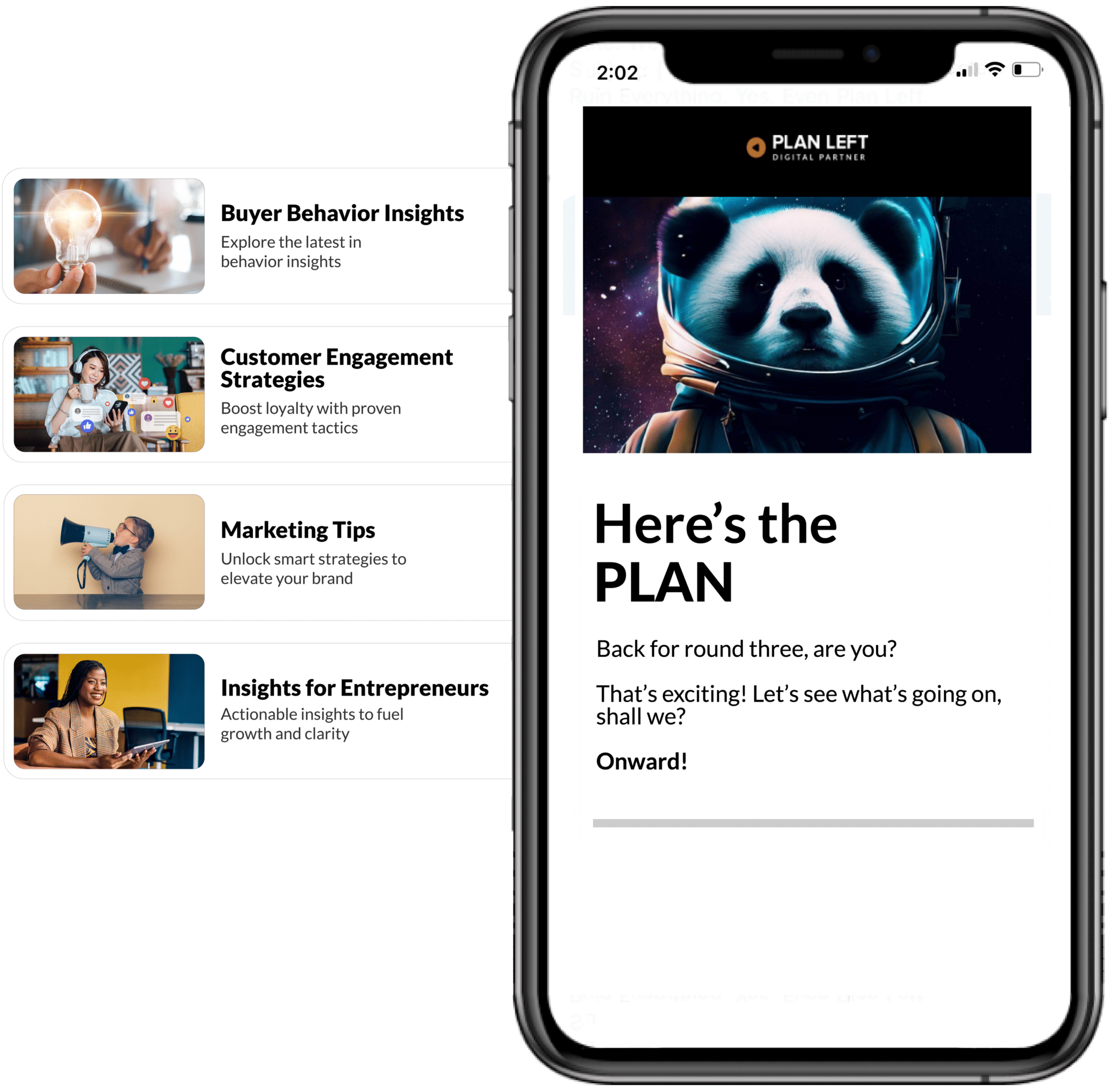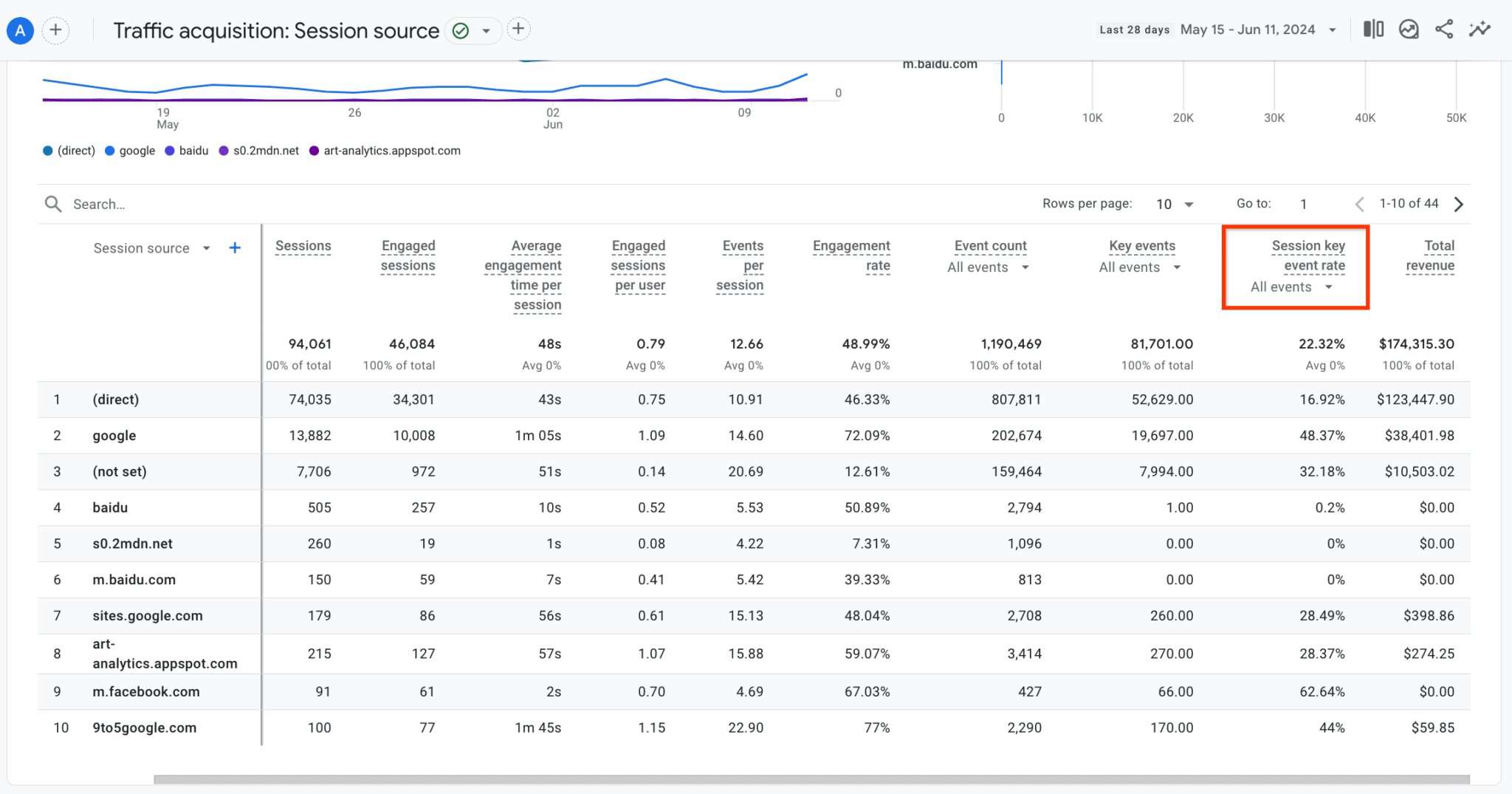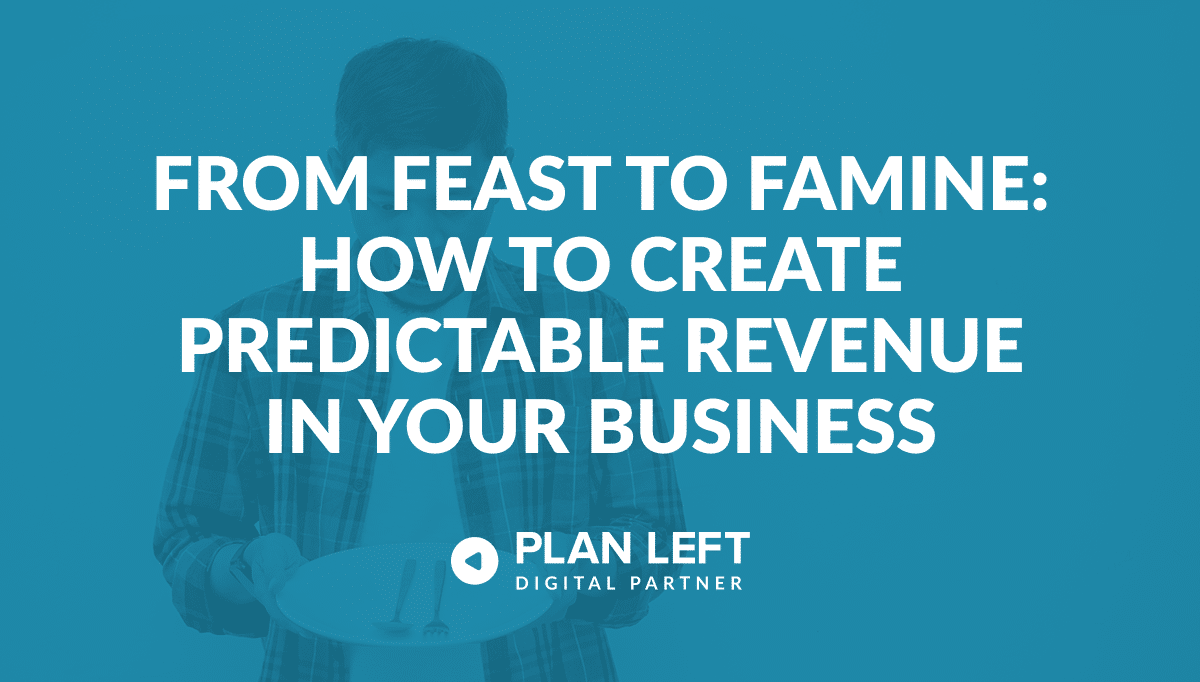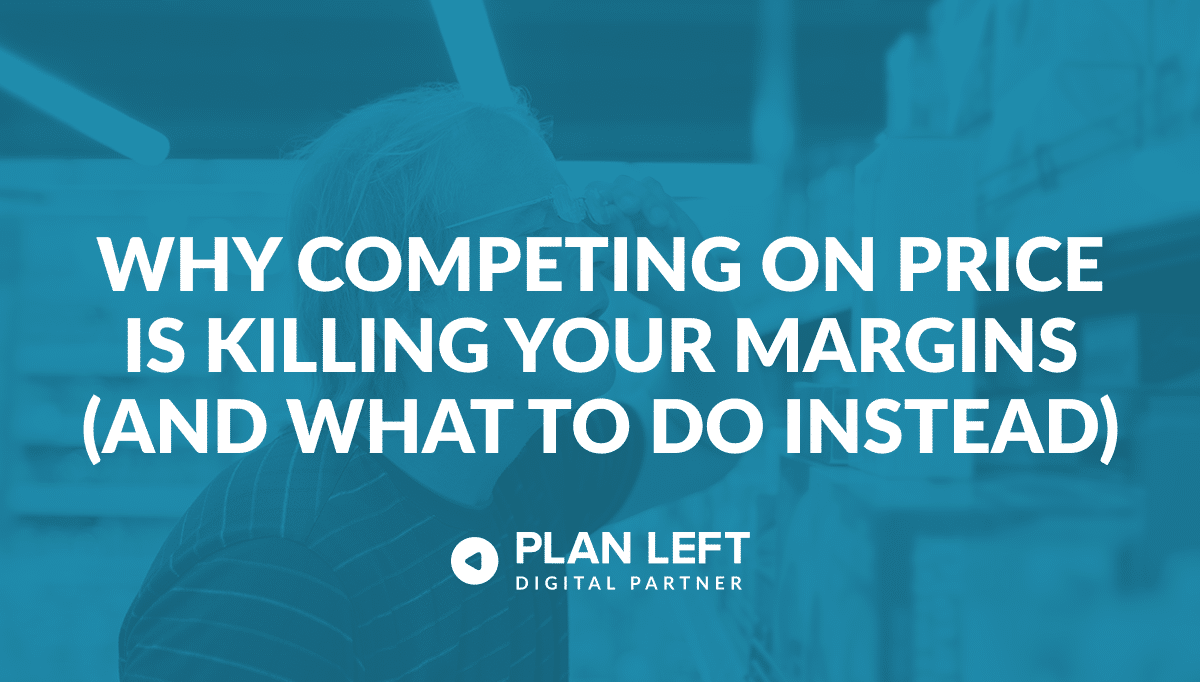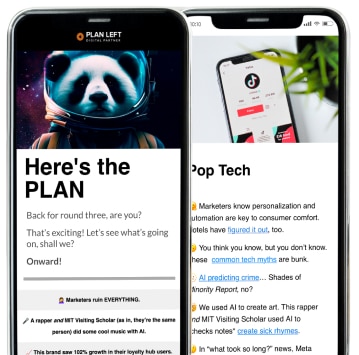
Google has added two new reporting metrics to GA4 and new advertising segments to track users based on their behavior and interactions. But if you’re a high spender in Google Ads, you may get an email from Google saying credit and debit card payments are no longer permitted. Plus, LinkedIn and Meta updated their tools. Let’s dive into this week’s Coffee & SEO.
Google Analytics Adds Two New Metrics
Google Analytics has added two new metrics: “User Key Event Rate” and “Session Key Event Rate.” These metrics will help businesses track and optimize user conversions more efficiently across acquisition channels.
Source: Google Analytics Help
The new metrics will appear automatically in the default User Acquisition and Traffic Acquisition reports for existing Google Analytics users.
- User Key Event Rate – Measures the percentage of users who complete a predefined conversion action like a purchase or sign-up.
- Session Key Event Rate – Tracks the percentage of sessions where the conversion event occurred.
Source: Plan Left GA4
Here is how you can use the data for data-driven decisions:
- Better conversion tracking by having dedicated user and session conversion rate metrics.
- Ability to optimize marketing spend across acquisition channels based on which drive higher conversion rates.
- Identify potential user experience issues if conversion rates are low for certain channels/campaigns.
Google Analytics Advertising Segment Update
GA4 advertising segments now allow your business to create audiences of users based on their behavior and interactions tracked in Google Analytics. These segments can then be shared with Google Ads for remarketing campaigns and ad personalization.
The advertising segments panel in GA4 shows the list of user segments that have been synced to Google’s advertising products, like Google Ads, displaying the “ads personalization eligible” audience size for each segment, matching the audience size shown in Google Ads Audience Manager. Your business can create custom audiences/segments based on events, conversions, demographics, interests, etc.
Source: Google Analytics Help – GA4 Advertising Segments
LinkedIn Expands Newsletter Publishing Features
LinkedIn rolled out new features and improvements to make it easier for creators to publish, grow, and engage audiences with their newsletters. With 59% YoY growth in members publishing newsletters, the new features hope to improve the overall experience for users and creators.
New feature highlights:
- Redesigned Reading Experience
- Comments are now displayed alongside the newsletter article for easier engagement.
- Allows readers to view discussions while consuming the content
- AI-Powered Cover Image Design
- Integration with Microsoft Designer to create custom cover images.
- Provides templates, size options, and AI suggestions.
- Improved Subscriber Notifications
- Email alerts and in-app notifications when a new newsletter issue is published.
- Provide prompts to followers to subscribe to your newsletter.
- Mention Profiles in Articles
- Embed links to other LinkedIn profiles/pages within newsletter articles.
- Expanded Access
- All LinkedIn members can now publish and host their own newsletters.
Google Says Traffic Diversity is Not a Ranking Factor
This is a hot topic in the digital ecosphere right now.
Google’s Search Liaison, Danny Sullivan, previously tweeted a response to a question about off-site efforts, advising site owners to diversify their traffic sources. However, he did not anticipate how his words would be interpreted.
Source: Search Engine Journal – Google On Traffic Diversity As A Ranking Factor
This, in turn, prompted questions from the SEO community about whether traffic diversity is actually used by Google as a ranking factor.
Source: Search Engine Journal – Google On Traffic Diversity As A Ranking Factor
In response, Sullivan clarified that traffic diversity is not a direct ranking factor for Google’s search algorithms and that his original tweet was providing general advice that sites should aim to build good content for people, not just for search engines.
Source: Search Engine Journal – Google On Traffic Diversity As A Ranking Factor
Sullivan went on to clarify that getting social media mentions or email links will not magically boost rankings—or at least from his understanding of things—and that those signals are not ranking factors themselves but that diversifying traffic sources can and should be a natural result of creating valuable content.
The bottom line is that digital marketing is a holistic approach, not a singular one.
Watercooler Highlights
Spending a lot of money in one place usually puts you on the nice list, but in an effort to automate processes, Google is letting the advertisers considered ‘high-spenders’ know they have until the end of July to switch credit or debit card payments to bank-based payments. Meta, however, updated its business tools with AI-integrated chatbots, paid marketing, and API threads.
Google Ads Transitioning to Bank-Based Payments for High-Spending Advertisers
Google Ads sent out emails giving notice that it is phasing out credit/debit card payments for certain high-spending advertisers by July 31, 2024, and moving to direct debit or bank account-processed payments. Failure to update payment methods by the deadline could lead to account suspension.
Google is notifying impacted “high-growth” accounts, though exact spending thresholds are unclear. While this provides more automation for Google, it eliminates a popular payment method that allows spending flexibility for some advertisers, which could cause cashflow issues for some impacted advertisers who lose the credit card option.
Meta Adds Messenger Chatbot, Paid Marketing, and Threads API
Meta introduced new AI-powered business tools to drive performance, reduce costs, and improve brand engagement across its platforms. These include AI chatbots on Messenger, paid marketing messages on Messenger, and a Threads API for publishing and engaging at scale.
- AI Chatbots on Messenger – Built with Meta’s LLaMa 3 language model, these new Chatbots can talk with customers about products and provide support.
- Paid Marketing – Select advertisers can now send paid marketing messages on Messenger to opted-in customers, similar to WhatsApp’s marketing messaging capabilities.
- Threads API – Allows businesses and creators to publish posts, engage with replies, and access insights across Threads using third-party apps.
Worth noting is that Meta claims every $1 spent on its ads generates $3.71 in revenue for advertisers on average, a 12% increase in ROAS from 2022. Campaigns using AI “Advantage+” tools see even higher ROAS, at $4.52.
Explore Latest Posts
5 Signs Your Business Is Ready to Own Its Marketing (Without an Agency) The default assumption in business is that ... read more
December 31, 2025
From Feast to Famine: How to Create Predictable Revenue in Your Business Three months ago, you couldn't take on another ... read more
December 29, 2025
Why Competing on Price Is Killing Your Margins (And What to Do Instead) When a prospect asks "how much do ... read more
December 25, 2025
Essential Strategies for Entrepreneurs
Get Actionable Business Insights & Marketing Tips
Our newsletter delivers real-world strategies from entrepreneurs who’ve been exactly where you are.
Sign up now for:
- Actionable growth strategies that work
- Insider tactics for attracting top talent
- Real-world case studies from successful founders
- Emerging tech trends that drive innovation
- Pragmatic marketing approaches for visionary leaders
